Great achievements since 1949
Located in northwestern China with a land area of 1,660,000 square kilometers, Xinjiang is China’s largest administrative region at provincial level. Historically, Xinjiang was the passage for land transport and exchanges between different cultures across Asia and Europe. The famous Silk Road linking the ancient civilizations of the East and the West went through this vast land. Its geographical location has resulted in Xinjiang's distinctive feature: coexistence and integration of diverse peoples and their cultures.
Xinjiang now has a population of 24 million. Major ethnic groups include the Uygur, Han, Kazak, Hui, Mongolian, Kirgiz, Xibe, Tajik, Ozbek, Manchu, Daur, Tatar and Russian, with the Uygurs as the largest population.
Since the founding of the People’s Republic of China in1949, Xinjiang has achieved the fastest development in history. Its gross domestic product (GDP) grew from 1.2 billion yuan (RMB) in 1955 to 961.7 billion yuan in 2016, a growth rate above the national average. Xinjiang's agriculture and husbandry-based economy evolved into one focused on industry and services. The per capita GDP rose from 241 yuan in 1955 to 40,648 yuan in 2014, about 24-fold increase in real terms. The rate of urbanization increased from 15% to 48% in the same period. By 2016, highway mileage reached 182,000 km, of which 4,395 km were expressways. Operating railway lines totaled 6166 km. It has in operation 18 civil airports, and 155 air routes totaling 230,000 km. Xinjiang now boasts the largest number of airports and the longest flight routes among all provinces and autonomous regions in China.
The mobile phone penetration reached 90%. Internet has covered most of the region, transforming Xinjiang into an information society. Xinjiang has registered rapid development in industrial, new and high technologies, and leads the country in such areas as railway traction transformer technologies, research and manufacturing of solar and wind power equipment, information processing of ethnic minority languages.
Xinjiang’s ecological system is extremely fragile, due to the fact that oases accounts for only 5 percent of the region's total area. It has been making unremitting efforts to protecting and building the ecological system and pollution control, carefully balancing need for economic growth and environmental protection.
In 2014, education expenditure increased to 6.47 percent of the GDP. A complete educational system from pre-school education to higher education has been established, and Xinjiang enters into the era of higher education popularization. The average life expectancy exceeds 72 years.
Xinjiang has become China’s frontline in opening to the west, the window for exchanges and cooperation with Central, South and West Asia. It also serves as the core area of Belt and Road Initiative. As a region with rich natural resources and great growth potential, Xinjiang is catching up quickly with the pace of national development.
A system of ethnic regional autonomy
As a multi-ethnic region, Xinjiang implements the system of regional autonomy for ethnic minorities. The essence of this system is that under the unitary and unified state leadership, a certain degree of autonomy is accorded to Xinjiang.
Compared with other provinces and municipalities directly under the central government, Xinjiang enjoys the power of legislation and the power to flexibly carry out decisions from higher-level state organs in accordance with local conditions.
People of all ethnic origins in Xinjiang are ensured an equal legal status. They enjoy the rights to vote and stand for election as prescribed by the Constitution and the law, the right of equal participation in the administration of state affairs, the right of religious belief, the right to receive education, the right to use their own spoken and written languages, the right to inherit and carry on the traditional culture of their own ethnic groups, etc.
Internal affairs of Xinjiang are administered by itself. Xinjiang guarantees all ethnic groups’ right to use and develop their own spoken and written languages, in such fields as justice, administration, education, news media, publishing, radio, movies, television programs, the internet and daily life. The diet, marriage and funeral customs of ethnic minorities are respected.
Candidates of ethnic minority origins are selected and cultivated as officials and professionals. Ethnic minority officials account for 51.4 percent of the total officials in the region.
At the same time, Xinjiang has always been an inalienable part of the unified and multiethnic country, bearing the responsibility of safeguarding national unity, ethnic harmony and social stability. The region has focused on eliminating ethnic misunderstandings carried over from the past. It has firmly opposed any form of ethnic oppression or discrimination, and outlawed any action that might sabotage ethnic unity or incite ethnic separatism. Along with the region's economic and social progress, contacts and exchanges among various ethnic groups of Xinjiang grow ever closer. A relationship of unity, harmony and mutual assistance has been developed.
Freedom of religious belief protected
Xinjiang is also a region with multiple religions. At present, the major religions are Islam, Buddhism, Protestantism, Catholicism and Taoism. Historically, the religious relations in Xinjiang were very complicated. Since the 4th century BC, Zoroastrianism and Buddhism made their way into Xinjiang. Manichaeism and Nestorians were introduced into Xinjiang in the 6th century. In the late 9th century, Islam was introduced into southern Xinjiang. Today, Islam has become the principal religion in the region.
Between different religions and different sects of the same religion in Xinjiang, there had occurred many conflicts, religious wars lasting for decades, and sectarian disputes of hundreds of years, causing serious damage to the economy and society of Xinjiang.
Since its founding in 1949, the People's Republic of China has been pursuing a policy of freedom of religious belief. The state protects citizens' freedom of religious belief and normal religious activities. All normal religious activities that believers conduct at venues for religious activities or in their own homes, including attending religious services, fasting, preaching, reciting scriptures, are protected by law, and no organization or individual may interfere with them. Muslim customs are fully respected.
Xinjiang now has 24,800 venues for religious activities, including mosques, churches, lamaseries and temples, with 29,300 clerical personnel. Among these, 24,400 mosques have 29,000 clerical personnel.
Clerical personnel have been trained through study under senior clerical personnel, at scripture schools (classes or workshops), at colleges, and by other means. Religious classics and books including the Koran have been translated and published in the Uygur, Chinese, Kazak and Kirgiz languages.
To ensure successful pilgrimages for believers in Islam, Xinjiang adopts a policy of organized and planned pilgrimages. The Xinjiang government has arranged charter flights every year to take Muslims to Mecca in Saudi Arabia, and offered medical care and interpretation services for pilgrims to ensure safe and orderly pilgrimages.
Xinjiang engages in active communication and exchanges with other religious organizations worldwide. Representatives from Xinjiang religious circles have participated in many international academic meetings and seminars, and clerical personnel and students from religious schools in Xinjiang have won prizes at many international Koran recitation contests, and some have been sent abroad for further study.
Religious believers serve as deputies and members in People's congresses and committees of the Chinese People's Political Consultative Conference (CPPCC) at all levels, participate in the deliberation and administration of state affairs, and supervise and inspect the implementation of the policy of religious freedom.
At the same time, religious believers must also fulfill their constitutional and legal obligations, and must not make use of religion to engage in activities that disrupt social order, impair the health of citizens, or interfere with the educational system of the state. Religious affairs and religious organizations in Xinjiang are not subject to control by foreign forces. Due to the effective implementation of the policy of freedom of religious belief, all religions in Xinjiang enjoy harmonious coexistence.
In China’s history, there had been attempts by colonialists and imperialists to split Xinjiang from China. Since the end of the Cold War, religious extremism, ethic separatism and violent terrorism have been rampant in many parts of the world. Xinjiang’s stability and development was also disturbed and impacted. The splittist forces, headed by East Turkestan Islamic Movement (ETIM), plotted and organized a number of bloody incidents of terror and violence, including explosions, assassinations, arsons, poisonings, assaults, and riots, seriously jeopardizing the lives, property and security of the Xinjiang people. The July 5 riot in Urumqi in 2009 caused huge losses in lives, in which 197 people died and over 1,700 were injured. The violent terrorists brutally killed innocent civilians, including the Islamic clerics and believers
Religious extremism betrays and distorts religious doctrines, deludes and deceives the Muslims with their fallacies, and endangers religious and social harmony in Xinjiang.
To fight against the violent crimes by the ETIM separatist forces and safeguard Xinjiang’security and economic and social progress, resolute steps have been taken by the Xinjiang Government. The occurrence of violent and terrorist incidents and the spread of religious extremism have been suppressed effectively. These measures received broad support by people of all ethnic groups in Xinjiang and are understood by friendly neighboring countries.
Xinjiang has a long history of being the key junction of the Silk Road and played an important role in the exchanges between China and Iran. Today, the Belt and Road Initiative provides new historic opportunities for economic cooperation and people-to-people exchanges between the two countries. Once again, Xinjiang occupies a position to significantly influence China-Iran cooperation and exchanges. It’s my sincere hope that Iranian friends take this opportunity to explore more of and better appreciate Xinjiang, conduct trade and investment on this land of hope, and promote the welfare and friendship of our two peoples.
MNA/TT


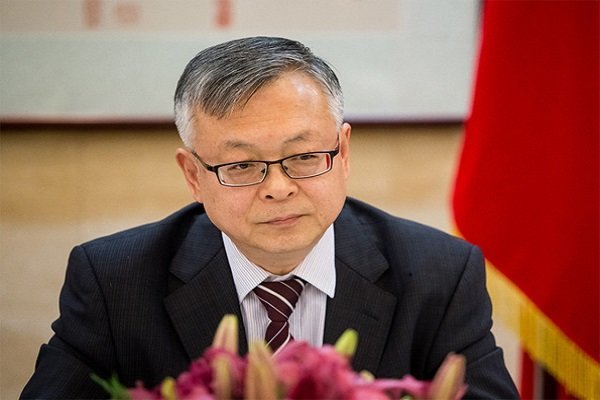

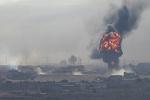
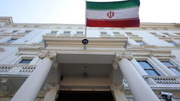

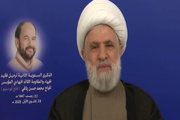

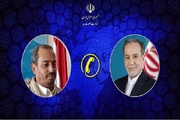

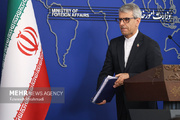















Your Comment